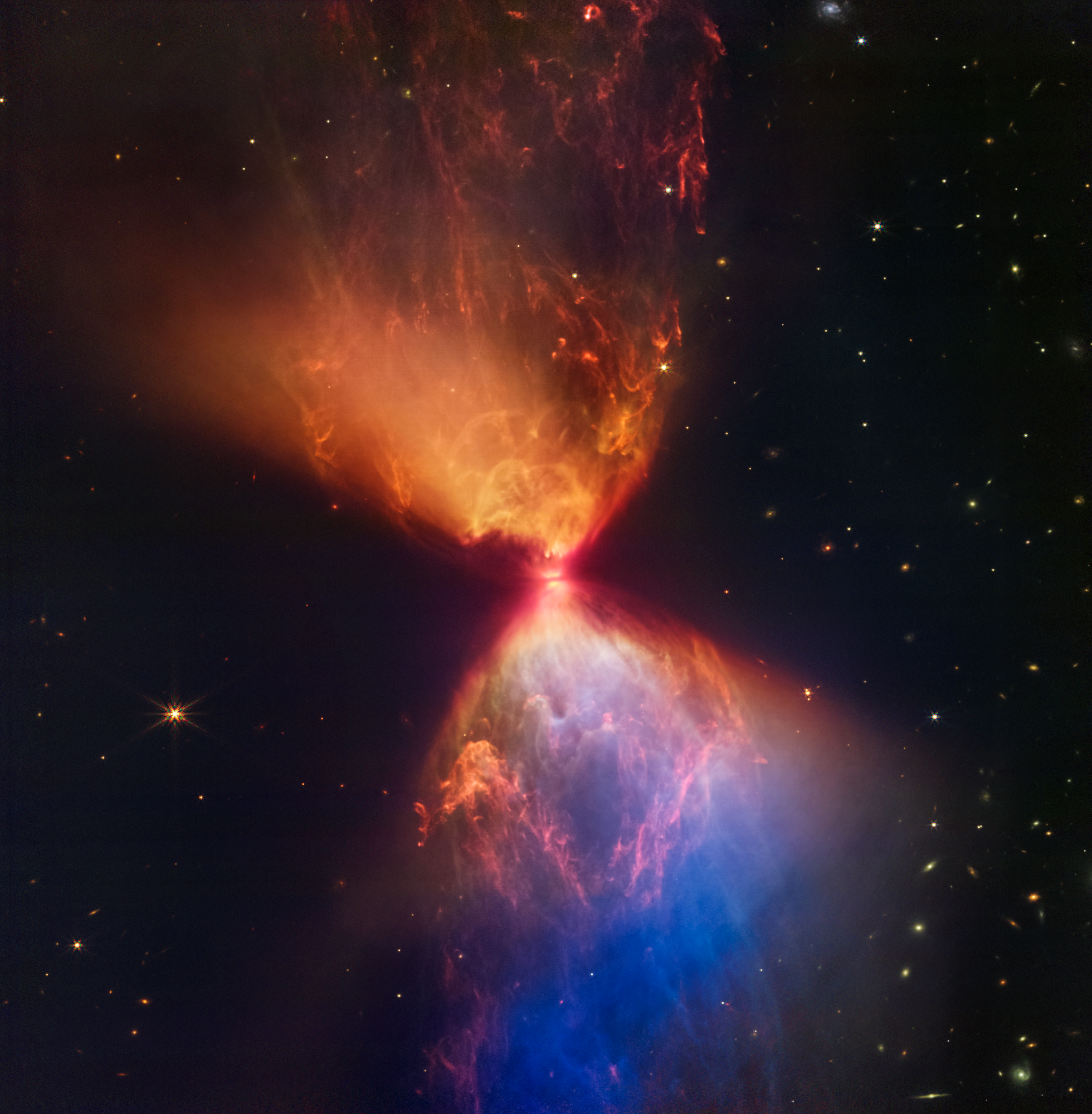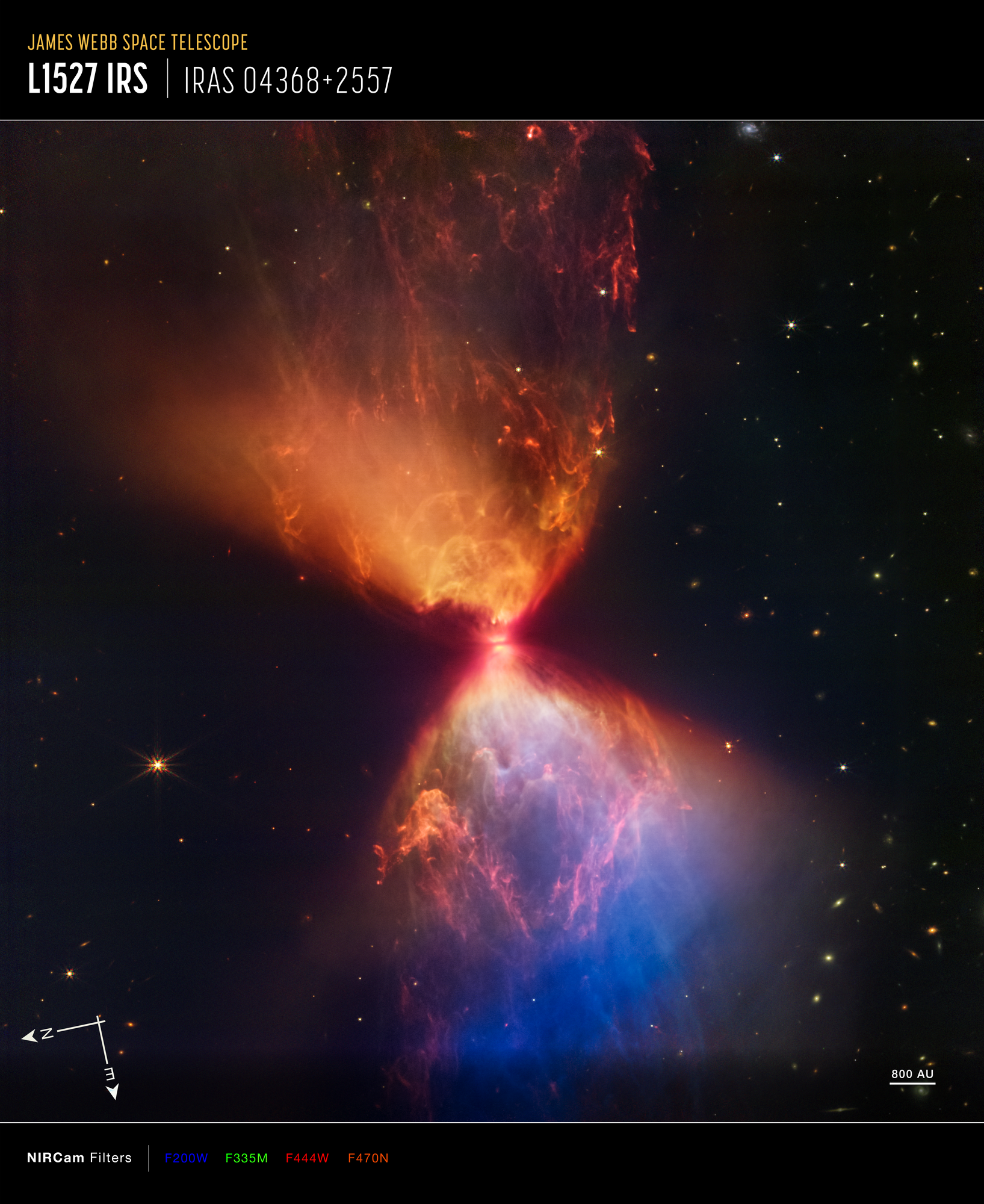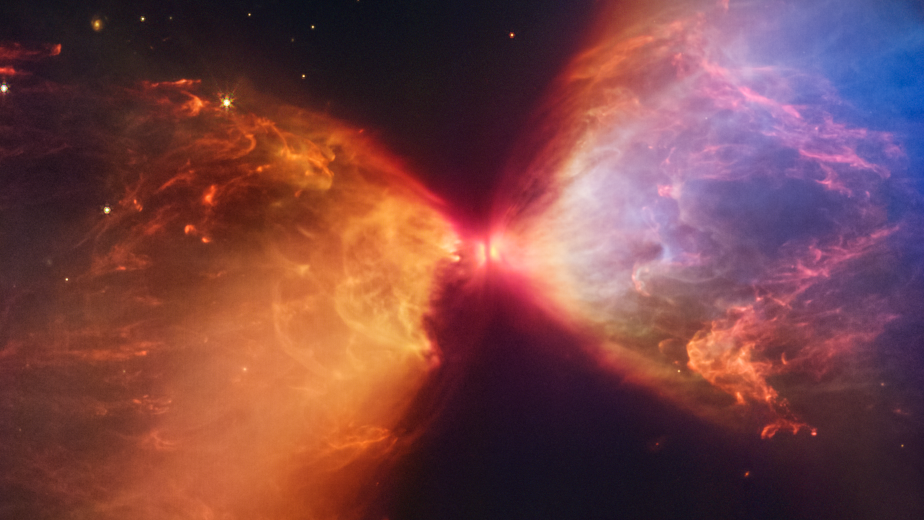James Webb Space Telescope captures mind-blowing image of a fiery space hourglass
The countdown to the formation of a new star begins! A protostar resides in an hourglass only visible in infrared light

NASA has released another mind-blowing James Webb Space Telescope image unearthed depicting a galactic hourglass of fire. The image illustrates what is known as the dark cloud nebula, L1527, and within this dark cloud lies a Protostar, the very beginnings of the formation of a new star.
Captured by Webb’s Near-Infrared Camera (NIRCam), the image shows invisible near-infrared wavelengths of light, that have been revealed and translated into colors of visible light that make up the elements and components of the image.
• Check out the phenomenal: Pillars of Creation image and the Cosmic Tarantula previously captured by the James Webb Space Telescope
About 460 light-years away, a new Protostar situates itself within an hourglass-looking cloud of space material, that is feeding its growth. The James Webb Space Telescope has captured yet another stunning image, this time revealing the once-hidden features of a protostar within the dark cloud nebula referred to as L1527.
This beginner protostar resides within the “neck” of this hourglass shape, and during its early formation will eject elements that can be seen to clear out and illuminate the cavities both above and below it, therefore depicting what the image portrays as glows of orange and blue boundaries, surrounding gas and dust, that create this hourglass-looking shape in a now-visible infrared view.
The image depicts blazing colored clouds within the Taurus star-forming region, that are only visible in infrared light, making this L1527 dark cloud nebula one of the most ideal targets for Webb’s NIRCam. These images produced by Webb are not only magnificent but have been providing valuable insight to astronomers and scientists into the beginnings and formation processes of a new star.

Bubble-like shapes can be seen displayed in the upper central region of the image, which exist due to what NASA describes as stellar “burps,” or sporadic ejections. The region at the bottom of the image also appears blue, which is where the space dust is thinnest between the protostar and the JWST, and the top half is thicker with less blue light able to escape, resulting in pockets of orange-colored regions just above it.
Get the Digital Camera World Newsletter
The best camera deals, reviews, product advice, and unmissable photography news, direct to your inbox!
The L1527 is relatively young, at only about 100,000 years old, and is considered to be a class 0 protostar, at the earliest stage of its star formation. NASA explains that Protostars like these have a long way to go before they can transform and become full-fledged stars, which explains why they are still cocooned in a dark cloud of dust and gas.

The protostar during its life will continue to gather mass, and the temperature of its core will rise, as its core gradually compresses and becomes closer and within the threshold for a stable nuclear fusion to begin, which is exactly what this amazing image is depicting. The dense cloud filled with molecular dust and gas is being drawn towards the protostar in the center of the hourglass shape which essentially feeds materials to it to achieve a greater mass.
To see more out-of-this-world images like the one above captured by the JWST's NIRCam instrument, be sure to check out the James Webb Space Telescope gallery. NASA says it will be launching new images at least every other week.
• You may also be interested in NASA's asteroid-smashing mission, as well as the first EVER image of a planet outside the solar system.
Take a look at our guides to the best telescopes for astrophotography, and the best deep-space telescopes, and don't forget the best lenses for astrophotography.

Beth kicked off her journalistic career as a staff writer here at Digital Camera World, but has since moved over to our sister site Creative Bloq, where she covers all things tech, gaming, photography, and 3D printing. With a degree in Music Journalism and a Master's degree in Photography, Beth knows a thing or two about cameras – and you'll most likely find her photographing local gigs under the alias Bethshootsbands. She also dabbles in cosplay photography, bringing comic book fantasies to life, and uses a Canon 5DS and Sony A7III as her go-to setup.
